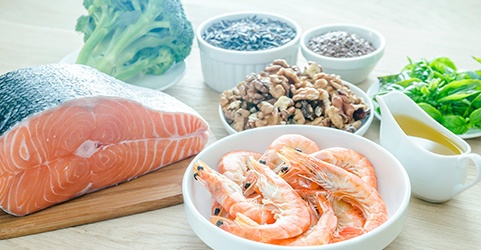
The holidays are here which means for the next month we will all be in a food-like coma of turkey and mashed potatoes smothered in heavy gravy. For some trying to watch what they eat, the holidays can be a nightmare to keep their willpower and avoid the 2nd helping of pumpkin pie. Luckily there are plenty of healthy alteruthrnatives to keep fit while you enjoy the food and time spent with family. In order to know what you are going to eat, you must know what you are eating; so for the next few weeks I will go in depth about fats, carbohydrates and protein.
Did you know a healthy diet should consist of 20%-35% calories from fats? Be aware that not all fats are created equal; you have good fats your body needs versus bad fats that your body doesn’t need. Good fats are a source of energy with 9 calories per gram that help in heart health as well as the absorption of fat-soluble vitamins A,D,E, and K. So what are the differences between good and bad fats?
The good: polyunsaturated fats, monounsaturated fats, and omega-3 fatty acids. What makes each these fats “good”: polyunsaturated fats are essential to us because our body cannot make them, thus requiring us to get them from the food we eat. Polyunsaturated fats come from seeds, nuts, and fatty fish which in return aid in lowering your total cholesterol level.
Monounsaturated fats, like their counterpart poly, aid in cholesterol health by raising your good cholesterol (HDL) and lower your bad cholesterol (LDL). Mono’s can be found in seeds, nuts, olive oil, and avocados. Last of the good fats are Omega-3 fatty acids that lower blood pressure, decrease joint inflammation and triglycerides levels. Fatty fish like salmon and tuna are full of these super fats as well as fish-oil supplements.

The bad: saturated fats and trans fats. What makes each of these fats “bad”: saturated fats can vary on health benefits. Some saturated fats increase ones total cholesterol and LDL levels as well as upping your risk of type 2 diabetes. Other saturated fats come from high quality minimally processed animal and vegetable sources providing a concentrated source of energy in your diet, and they provide the building blocks for cell membranes and a variety of hormones and hormone like substances.
The best saturated fats, for example, come from coconut oil while bad saturated fats come from ice cream and butter. Trans fats are liquid oils that stay solid at room temperature found in processed and fried foods. Foods such as chips, cookies, and margarine (to name a few) will elevated your LDL (bad cholesterol) levels and lower your HDL (good cholesterol) levels so you want to avoid trans fats at all cost.
Over the next few weeks will be a time to gather around the tv to watch football and stuff our faces with, well stuffing, but some of us face the challenges of maintaining a proper diet. While sometimes it is good to pig out (aka a cheat meal) at times to fire your metabolism back up, it is important to know what you’re putting in your body and how your body will react. Be sure to check back next week as I will discuss carbohydrates and the different kinds out there!
